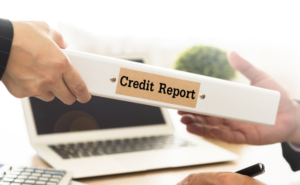What Is the e-Oscar Method Of Investigation?
If you have the time or want to study more about credit reporting, you’ll discover that the field is packed with jargon and acronyms. Many of these terminologies may be unfamiliar to you, yet each significantly influences your credit score.
e-OSCAR is an acronym you should get acquainted with because e-Oscar is the mechanism you’ll use to dispute a credit report claim.
Even when customers bring in comprehensive grievances with accompanying evidence, the e-Oscar (Online Solution for Complete and Accurate Reporting) method is used. The disagreement is boiled down into a two or three-digit code and forwarded to the original creditor to verify a simple code, so failing to fulfill the obligation to investigate.
Table of Contents
What Is the e-Oscar?
The “OSCAR” stands for “Online Solution for Complete and Accurate Reporting.” Equifax, Experian, and TransUnion, the “big three” credit agencies, developed the program in 1993. With the recent acquisition of Innovis as a significant credit reporting agency, all four credit bureaus now own and use e-OSCAR.
E-OSCAR is a computerized credit dispute resolution system. The agencies formed it to help with the increased quantity of people required to process consumer claims of credit report errors.
According to the Federal Trade Commission (FTC), one out of five customers has a credit report inaccuracy. Many of these mistakes might have a detrimental influence on a consumer’s credit score.
Under the Fair Credit Reporting Act (FCRA), anybody who discovers an inaccuracy on their credit report can dispute it with the credit bureaus. However, because maintaining and rectifying these inaccuracies required a lot of effort, eOSCAR was developed to address this issue.
The system primarily facilitates the execution of Automated Credit Dispute Verification (ACDV) and Automated Universal Dataform (AUD) and a variety of associated activities such as registration, subscriber code management, and reporting.
Consumers can contact the credit reporting agency via phone, online, or mail to file a complaint. On the other hand, most agencies prefer that the consumer submit their complaint in writing in the form of a dispute letter. With thousands of letters arriving every day, the bureaus devised eOSCAR to speed up the dispute resolution procedure.
How Does e-Oscar Work?
You have the option of disputing an item on your credit report by phone, mail, or online. However, most credit reporting companies encourage clients to send a formal credit dispute letter.
After the consumer reporting agency receives your disagreement, your disagreement will be entered into the eOSCAR system. Your disagreement is turned into a three-digit code after entering into the system.
Depending on your scenario, these three-digit codes indicate different things. For example, code 001 indicates that the debt is not yours, whereas code 002 indicates that it belongs to an individual with a similar name. These are crucial characteristics that assist the credit reporting bureau to categorize the loan.
eOSCAR representatives can pick from 29 different three-digit codes. The credit reporting agency may also publish a brief explanation of the dispute in addition to the code.
When e-OSCAR gets the information, it creates a formal credit dispute. The data is subsequently provided to the data furnishers, who provide the credit bureaus with your information via an Automated Credit Dispute Verification (ACDV) form.
e-Oscar Coding
When a credit reporting agency files a dispute, it is entered into the e-OSCAR system. The complaint is then assigned to one of 29 three-digit dispute codes by an e-OSCAR professional. These codes include:
- 001 — not his/hers.
- 002 — belongs to someone else with the same or similar name.
- 008 — late due to change of address or never received the statement.
- 010 — partial payments or settlements accepted.
- 019 — the bankruptcy of another person.
- 038 — claims accounts that are closed by consumers.
The agency may also submit a few lines of explanation in addition to the code that best suits the disagreement. After receiving this information, e-OSCAR develops and registers a formal disagreement. It then sends the information to the other credit reporting agencies and data providers that need it.
Issues With e-Oscar
Due to the obvious large number of credit disputes, the eOSCAR system makes it easier for credit bureaus to deal with them. However, there are certain drawbacks.
Credit disputes may be difficult and one-of-a-kind. That’s why e-OSCAR detractors argue that a three-digit code or two lines of explanation aren’t enough. Attorneys urge clients to provide as much proof as possible to back up their claims.
According to CreditCards.com, “by adding the proof with your letter (and keeping duplicates for your files), you make it much more difficult for the credit agency to subsequently argue that the error is your responsibility since you didn’t give enough information.”
You might attach extra proof to back up your case when sending a credit dispute letter to the credit reporting bureau. However, credit bureaus aren’t always able to recognize the complexities of these circumstances because of e-OSCAR.
These credit disputes are reduced to a three-digit code using the e-OSCAR system. And deciding which three-digit code applies to your situation is totally up to the agent’s judgment.
Consumer Financial Protection Bureau (CFPB) reported in 2012; Credit bureaus found it difficult to submit more papers to eOSCAR. The Consumer Financial Protection Bureau (CFPB) requested that e-OSCAR facilitate this procedure. They noted in 2014 that e-OSCAR now offered more alternatives for delivering this data. However, opponents doubt whether the e-OSCAR team thoroughly reviewed that data while preparing the study.
Changes In e-Oscar
The Consumer Financial Protection Bureau (CFPB) examined how the “e-OSCAR” system did not allow credit bureaus to send any papers given by customers to furnishers (anyone who supplies information to the credit agencies) in a December 2012 report.
The Consumer Financial Protection Bureau tries to enhance the dispute procedure. Consequently, the “e-OSCAR” system has been modified to allow credit bureaus to email furnishers any relevant dispute documentation provided by customers.
The Consumer Financial Protection Bureau (CFPB) engages with consumer reporting agencies to enhance the dispute resolution process for consumers. In addition, consumer reporting agencies have provided extra workers to analyze data furnisher answers and disputes.
Final Word
The credit bureaus utilize the e-OSCAR system to manage customer dispute claims. Sadly, the e-OSCAR system isn’t flawless, and there are still methods to make it better.
The Consumer Financial Protection Bureau (CFPB) collaborates with customer reporting agencies to develop innovative, consumer-friendly solutions. If you need to dispute an error on your credit report, make sure you do your homework and, if required, get expert help.
The Consumer Reporting Agency (CRA) has 45 days to settle a dispute under the Fair Credit Reporting Act (FCRA). If the issue is related to an account with your company, the credit bureau will normally contact you to inquire about the item you reported.
CRAs resolve only 15% of complaints without engaging the data provider. The CRA will notify you of the decision once you have responded to the disagreement. Either the error will be confirmed and repaired, or they will find that there was no error, and the item will be recorded as correct.






